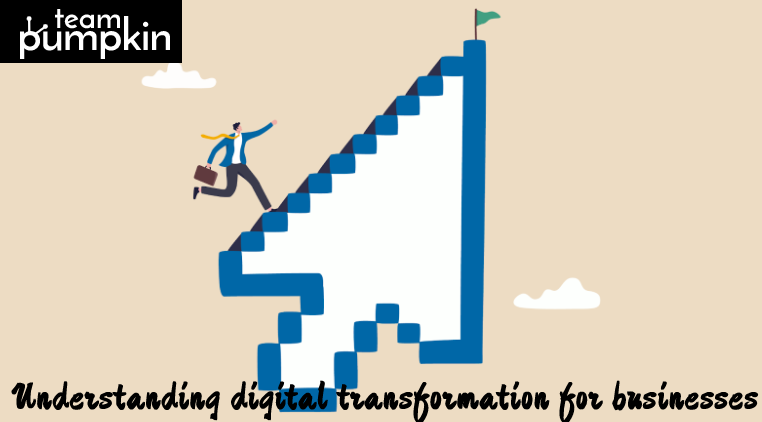

In today’s world, where technological prowess determines how successful and relevant a business can be, it is important to have a thorough understanding of the many implications of digitization on a brand. It has direct consequences on a brand’s presence online, being highly dependent on the ways and frequency of leveraging different components and channels. Ultimately, it forms an essential part of a business in the modern context, especially if it seeks to leave a consequential impact on the minds of audiences who would go on to become a loyal customer base for the long term.
What are the types of digital transformation?
There are 4 major types of digital transformation, each differing from each other in both purpose and process.
1. Process transformation
This has to do with incorporating tools such as data, analytics, and AI. It encompasses all the processes that can boost operational efficiency for an organization.
2. Business Model Transformation
This covers all the fundamental components and elements that influence the way a business/ organization runs and functions. This can include everything from business processes to the company’s people/ human resources.
3. Domain Transformation
This refers to a brand moving into a different sector of business which can be made possible through the right technology. a
4. Cultural/ Organizational Transformation
This has everything to do with the way an organization thinks and perceives the world around it – from mindsets to skills.
A process as extensive as digital transformation requires strategic thinking and process implementation. The prerequisite step to this is to create a framework that includes all the necessary steps that should be undertaken for the transformation.
What are the key steps to enabling digital transformation?
1. Derive a purpose
Every business is fundamentally different and comes with its own motivations for embarking on the digital transformation journey. Finding the core reason for why your business needs a digital transformation will provide you with much needed clarity when getting started and proceeding through the later stages of this. The purpose must also have a key result in mind in terms of what the business hopes to achieve – whether it is to improve business efficiency, improve customer servicing, or anything else.
2. Prioritize customer needs
Ideally, customer satisfaction should be at the top of your mind when looking to transform your business. No matter the size and scope of the transformation, it should benefit customers in some way or the other. Because they are the key drivers to your brand’s success.
3. Fill in any gaps
Any business transformation must not only look to build upon what’s already good, but also troubleshoot any new/ lingering problems that may be hindering the organization in any way. This can be done by introducing new processes to increase overall efficiency, improving cost efficiency, compiling more data, and so on.
4. Restructuring
Transformation gives a company the golden opportunity to introduce restructuring across the business. This doesn’t have to be done on every single level, and can be done in the smallest of senses. However, there’s no denying the utility it offers in being able to accommodate better changes, identify areas that need improvement, and focus resources on elements that need additional attention.
5. Reviewing
Digital transformation isn’t a single step process. Meaning that constant attention is needed even after the transformation is done. This comes in the form of revisiting, reviewing, and reworking different components to ensure that your business is functioning in the most efficient way possible, and can adapt to the numerous needs & demands of the future.
Digital transformation can be a daunting task, and even more so if undertaken all by yourself. Having the expertise of a digital marketing business such as Team Pumpkin can help make the process a whole lot simpler and yield results that you can look back on proudly.
